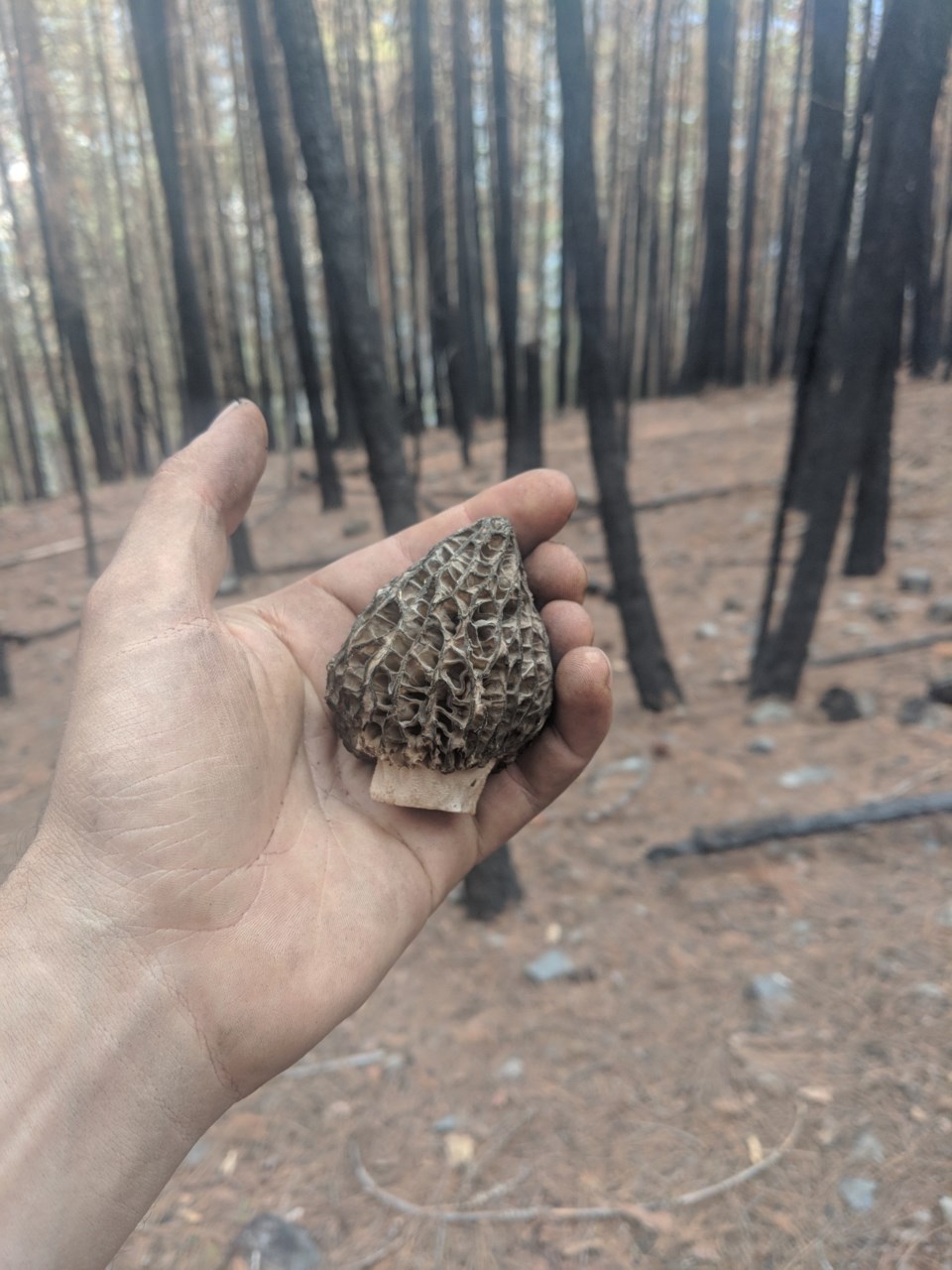Until a few years ago, I was certain
that I did not enjoy mushrooms of any kind. The generally weird, slimy consistency just didn't do it for me. It took the tender meatiness and earthy, nut-like flavour of Morchella esculenta, or yellow morel, to convince me otherwise. I first caught site of these odd-looking mushrooms in France, recently cut and hanging from the rafters of a house. What began as a food I tried out of curiousity rapidly turned into one of my favourite wild edibles.Yellow, black, and other edible morels from the genus Morchella are some of the few mushrooms you can find and pick in the spring in the wild. Morels form a complex relationship with their surrounding environment that is difficult to replicate through artificial cultivation. Though new advances in science have made attempts to farm morels more successful, the practice continues to prove challenging. If you've had morels-in a restaurant or purchased dried from the grocery store-these have likely been harvested in the wild.
There's a saying that "Morels are everywhere, but impossible to find." I've certainly felt this way on forays into mosquito-saturated woods to seek them out. Morels don't necessarily pop up in the same place every year. Colloquially, edible morels can be organized into two groups: fire morels, growing in or around the scars of the previous years' forest fires; or naturals from everywhere else. In many cases, morels seem to develop in places where the soil has been disturbed-for instance, by fire or excavation.
Morels can vary wildly in appearance. The shape can range from conical, to oblong, or bulbous, while colour can vary from pale yellow or cream to brown or even charcoal. The exterior has a honeycomb-like appearance, with ridges and pits forming the surface of the cap. But a warning: like many wild edibles, they also have toxic lookalikes. One of the crucial (but not tell-all) ways to identify true and edible morels from false ones is to cut them in half. In true morels, the hollow stem runs continuously into the hollow cap. A stem that is not hollow, or hollow only in some spots could be the questionable elfin saddle (Verpa spp.) or a poisonous specimen of false morel (Gyromitra sp.).
Although classified as edible, it's important to note that true morels still contain a mildly toxic substance. This chemical is destroyed by cooking, but it's always a good idea to try only a small amount on your first attempt. Allergic reactions aren't unheard of.
There's another saying: "There are old mushroom pickers and there are bold mushroom pickers, but there are no old-bold mushroom pickers." Meaning it would be quite unwise to eat any mushroom you might find solely on the basis of this article. If you're new to mushroom identification, or new to this area, have an experienced hunter take you out first. If I haven't scared you off and you're curious to learn more, join the Whistler Naturalists and scores of mushroom experts and enthusiasts at this year's Fungus Among Us festival, October 18 to 19.
Naturespeak is prepared by the Whistler Naturalists. To learn more about Whistler's natural world go to Whistlernaturalists.ca.




